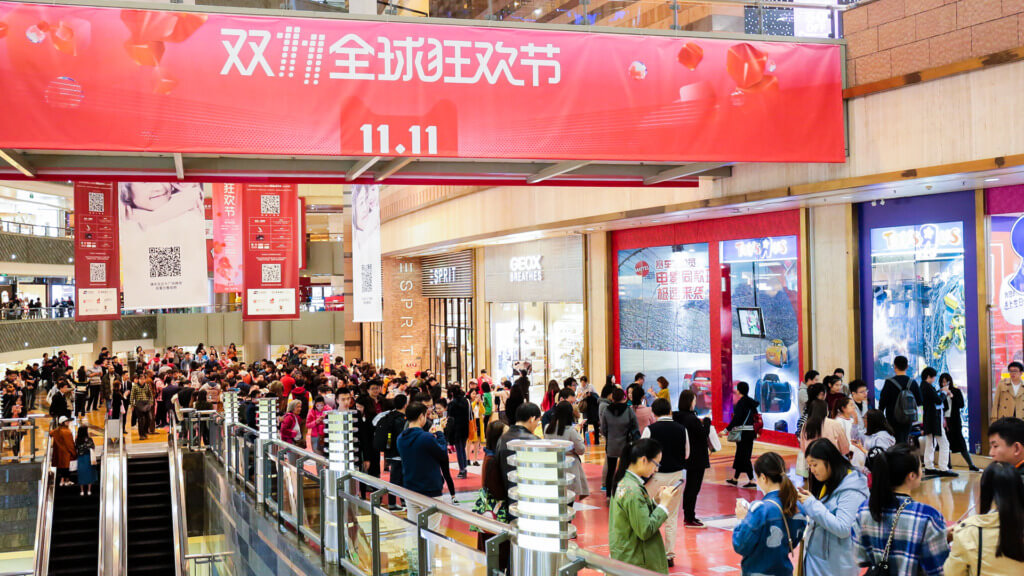Disruptive Technology Series: The future of retail
Ever since Singapore entered Phase 2 of its post-lockdown measures, the ensuing result of snaking queues in malls have returned albeit not for the reason of overcrowding, but on the contrary, to...

Ever since Singapore entered Phase 2 of its post-lockdown measures, the ensuing result of snaking queues in malls have returned albeit not for the reason of overcrowding, but on the contrary, to limit the number of patrons entering establishments. Although the queues deliver a touch of optimism for retailers given the country’s over two-month-long slumber, it remains to be seen if the momentum is sufficient to dramatically increase revenues as many are still cautious of heading out. The footfall in retail spaces is unlikely to return to pre-COVID19 crowds at least in the near future.
Table Of Content
As the world continues to battle the global health crisis, the economic downturn that followed hit the retail sector hard, with Singapore recording a year on year plunge in sales of 40.5% in April 2020 – its worst since 1986. Though some may argue that these numbers are anomalies brought about by the pandemic, similar worrying trends have actually been around for the past decade, giving rise to the term “retail apocalypse” after a slew of major retailers in the US started shuttering. The domino effect of these closures eventually hit the APAC region as more retailers announced their exit or will be significantly downsizing, such as those shared by Al-Futtaim Group and Inditex.
The rise of e-commerce: What drives them?
Although a reduction in consumer spending initiated the shrinking revenues of the retail sector as a result of the 2008 Global Financial Crisis, the e-commerce wave was picking up within the same decade of this decline. This growth paved the way for e-commerce companies like Amazon to push its sales to over a quarter of a trillion dollars and Alibaba growing its sales by 5,700% since 2010. According to research, e-commerce sales growth saw APAC leading other regions at 25%. To add, by 2030, approximately 60% of the world’s global growth is expected to come from APAC, and the fight for market share would favour companies who take into consideration the drivers of consumption.
In Singapore, iprice reports that the top three e-commerce apps in Singapore are Lazada, Qoo10, and Shopee. Lazada, which operates in six regional markets (Singapore, Vietnam, Indonesia, Philippines, Malaysia, and Thailand) leads the group in monthly active users registering at more than 7.7 million. Shopee, on the other, had seen the most downloads and is the top-ranking e-commerce app in both AppStore and PlayStore. These statistics inevitably support the rise in e-commerce which can be attributed to three major factors – the consumerisation of technology, inherent advantages of e-commerce, and technological advancements.
At present, smartphone penetration lies at 64%, and as internet availability increases worldwide, along with improved bandwidth and decreasing cost, this number is predicted to grow to 81% in 2025. Operating an online store would naturally have a price advantage as e-commerce companies would have little to no overhead costs, and this can be translated to better prices for the consumers. Product offerings are also wider online as companies are not limited to floor-space. In contrast, brick-and-mortar retail companies would have to be selective on the kind of products they want to feature in their physical stores and consider the opportunity costs involved in displaying one product over another.
Other considerations would also include procurement, storage, as well as constant re-stocking, which are all capital and labour intensive, leading to decreased profit margins. As consumers try to cope with an increasingly fast-paced lifestyle, convenience becomes a priority and this is further exacerbated by longer waiting times in physical retail spaces brought about by current social-distancing measures.
Singles’ Day: 2019 sees record-breaking sales

Perhaps one of the key impetus that would help brick-and-mortar retailers appreciate the value of e-commerce would be the success of the Singles’ Day online shopping event. First introduced in 2009 by Alibaba into the local Chinese market, the event falls on 11 November and has grown to be the biggest worldwide online shopping event. During the 24-hour spree, consumers can benefit from discounts offered by thousands of international as well as local brands within the Alibaba marketplace and its online platforms. In 2019, the event saw Alibaba reach a record-breaking gross merchandise volume (GMV) of approximately US$38.3 billion, which exceeded consumer spending during any major US shopping event such s Black Friday or Cyber Monday.
With e-commerce touted to be one of the main drivers of the Southeast Asian economy, e-commerce leaders in the region have also seen massive sales from Singles’ Day 2019. In the first hour of the event, Lazada received over 3 million orders whereas its rival Shopee, saw its order volume triple compared to 2018. A sales booster strategy commonly adopted for the event was live-streaming which allowed high interaction between users and sellers/brands and is now part of the e-commerce culture and shopping experience.
Live Commerce: Instil confidence and engage with your audience/consumers
One of the drawbacks of e-commerce has to do with tangibility as 62% of consumers rate being able “To see, touch, feel and try out items” as the top reason driving their preference for in-store purchases. This motivation to could also possibly be exacerbated by the unfortunate prevalence of e-commerce scams that all too often are being shared as bad reviews online – in Singapore, e-commerce type scams are the most reported type of scams in 2019 – as well as the unavoidable issue of counterfeit products.
A solution to this is live commerce – a term coined from live stream and e-commerce – which is usually done in commission-based partnership with an influencer who will provide a live stream of them endorsing the use of the sponsored product. To assuage potential online buyers, many e-tailers have employed the use of live-streaming, which apart from instilling consumer confidence in their product, also has the added benefit of enhancing customer experience.
This capitalizes on the drastic increase of social media users around the world. From 2008 to 2019, the number of monthly active Facebook users increased from 100 million to 2.38 billion (761%) and in mid-2019 Alibaba’s Taobao had reported their viewership at 9 million viewers a day. To further drive this point and put into current perspectives, social media users on Instagram and Facebook Live have increased their time spent on these apps by 70% within just a week during this pandemic.
With all the effort that live streamers put into their craft to create buzz for a product, the features in live commerce platforms play a major role in facilitating the engagement as viewers can react and comment in real-time and more importantly, viewers can purchase the products with just one click. In China, Singles Day (11 November 2019) alone brought in US$2.85 billion in sales via Taobao Live – China’s leading live commerce platform owned by e-commerce titan Alibaba. Although live commerce seems to be gaining most of its traction in China where it was reported to have initially started in 2014, Western brands such as L’Oréal and celebrity Kim Kardashian have jumped on the bandwagon to partner with live streamers resulting in very encouraging outcomes.
Closer to the APAC region, Alibaba-owned Lazada bolstered their engagement with consumers by live-streaming a concert as part of its 7th birthday celebration in March 2019. A month later, it used the same strategy to create buzz for its Women’s Festival. Other high engagement approaches like “See-Now-Buy-Now” live-streamed fashion shows allowed app users to purchase designer apparel from international brands. The platform shared that the shows reached 300,000 views in Malaysia, Philippines, and Thailand and attracted key stakeholders like celebrities/influencers, fashion editors, and fans.
Within the same month in Singapore, e-commerce competitor Shopee debuted its live-streaming feature, Shopee Live. The enhancement allowed users to chat with sellers, find out more about the product prior to purchase and doing so in real-time without ever leaving the app. The Tencent-backed platform claimed that participation in Shopee live saw both sellers and brands enjoy sales increase by up to 75%.
Although the case for e-commerce is strong, it is not to say that businesses should abandon their physical stores and solely pivot to e-commerce. Such digital tools are not exclusive to e-tailers and brick-and-mortar establishments need not pack-up and shift everything online just to benefit from live commerce platforms. Many other easily accessible platforms can be utilised like Instagram, TikTok, and Snapchat which appeal to Gen-Z shoppers who are found to have an affinity for more ephemeral content.
Augmented Reality: Respond to consumers needs
Instant gratification seems to be one of the key motivations to consumer purchases as 45% of consumers responded that they are will pivot to other brands if a company does not anticipate the immediacy of their needs/wants. Taking into consideration how time-poor most consumers are given their fast-paced lives, by providing them with the avenues to help make their decisions on the go and facilitate their purchases is one of the ways that augmented reality (AR) can come into play.
Defined as the adoption of computer-generated perceptual information that draws upon multi-sensory effects to create interactive experiences, AR is the amalgamation of virtual and real-world elements delivered to enhance experiences – think Pokemon-Go.

IKEA is one retailer that is touted to be an early adopter of AR technology into its business model via the release of its IKEA Place AR app. Unlike apparels where buyers can try out the sizing, fit, and style to match with their individual likes and return them easily for other apparels, bulky items like furniture do not have the same convenience. In the same vein, the impetus for IKEA Place came about after a survey showed that 35% of their customers returned their purchases as they did not like the way the product looked in their homes. To add, the success of IKEA’s app equivalent of its catalogue book is eclipsed by the fact that customers can only browse and wishlist the items on the app but they still had to head down to physical stores or to the website to purchase the item(s).
The development of IKEA Place using Apple’s ARKit allowed potential buyers to easily re-imagine their spaces by choosing the IKEA item on the app, and simply “placing” the item using their phone via the camera function to visualise how the item will look like upon purchase. Boasting a 98% accuracy rate, the app also takes into account light and shadows to render the superimposed image, and allow users to make purchases within the app itself. Within 6-months of launch, IKEA Place was the 2nd most downloaded ARKit app. Though there are no statistics as of yet to assess whether the app had a direct impact on the reduction of returns or improved sales, it certainly represented a great marketing boost for the company who has ambitions to reach 3 billion customers by 2025.
Other retail companies that have used AR is Sephora, whose Visual Artist app that was developed in partnership with ModiFace allows users to preview how a particular make-up item will look on their face before buying it. The Visual Artist app also provided regular updates whereby users can now preview the make-up in real-time (compared to when they had to upload a selfie), and also use the Color Match feature that will suggest a line of products to match with the user’s chosen apparel. These updates were introduced when a survey on other apps revealed that conversion rates fell 22% when the virtual products did not appear as suggested on the user’s face.
According to analysts at International Data Corporation (IDC) spending on AR in the APAC region will see a five-year compound annual growth rate of 62.0% during the forecast period of 2018 to 2023. In 2019, the retail industry spent 244.4 million in AR activities and implementation – the second highest, just behind education. From the examples above, it shows that the advent of technology in the retail scene need not be met with a full shift to selling products in digital spaces as both IKEA and Sephora still operate their physical stores. As part of their digital transformation, IKEA and Sephora used AR as a tool to remain competitive, but the key point here is paying attention and responding to consumer behaviours.
Help for retail companies in Singapore
Recognising that a new era is dawning upon the retail sector and that the industry is being hit hard by the pandemic, the Singapore government has rolled out the E-Commerce Booster Package that will be overseen by Enterprise SGsome measures to assist companies in this transition.
For retail companies looking to adopt e-commerce methods in their operations, a 90% cost-waiver can be granted if they sign-up with one of the four e-commerce companies in Singapore – Amazon, Lazada Singapore, Qoo10 or Shopee. The chosen e-commerce companies will assist to directly offset to the one-time support capped at $9,000 and also assist retailers in curating and listing products for a maximum of six months, offer promotional campaigns, fulfil orders as well as analyse sales data.
Apart from the above, retailers under the scheme will also receive help to offset labour costs where they will receive support for 90% of the salary costs for three employees – new hires and existing employees (Singaporeans and PR) are eligible. Interested retailers keen to make the shift online can sign-up for the package directly with the chosen e-commerce platform till 30 September 2020.
With the vast improvements in technological infrastructure and a healthy tech ecosystem, the shift to online interactions and transactions comes naturally as people adapt to their increasingly fast-paced lives. Retailers are being challenged by an increasingly consumer-driven market and taking into consideration the same factors that are enabling e-commerce to flourish; traditional brick-and-mortar models should keep an open mind to the opportunities that technology can bring and embrace digitalisation. The once-off transactional approach is near obsoletion hence diversifying its mode of operations by paying particular attention to consumers as well as their experience would give retailers a shot at surviving the retail apocalypse.
















